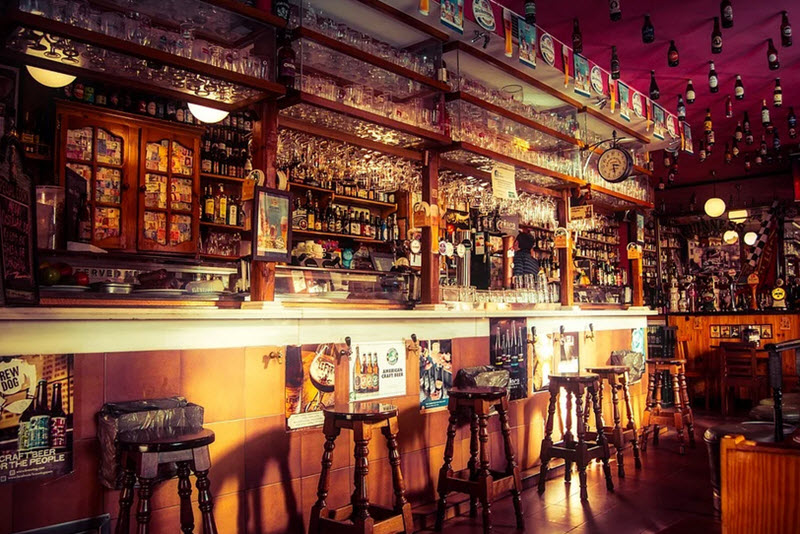Brewpubs, a concept that combines the brewing of craft beer on-site with a pub or restaurant where the beer is served alongside food, have become increasingly popular around the world, particularly in regions with a vibrant craft beer culture such as the United States, Europe, and Australia. This hybrid model offers a unique experience for patrons, allowing them to enjoy freshly brewed, often exclusive beers in a setting that promotes a communal atmosphere and appreciation for the craft of brewing.
Brewpubs now represent a significant and growing segment of the global craft beer industry, offering a unique blend of brewing and culinary experiences. They not only serve as venues for enjoying high-quality, innovative beers and food but also as community hubs that promote a deeper understanding and appreciation of the craft brewing process. As the craft beer movement continues to evolve, brewpubs are likely to remain at its forefront, continuing to shape the tastes and preferences of beer enthusiasts around the world.

History and evolution
The concept of brewpubs is not entirely new and has historical precedents in several cultures. However, the modern brewpub began to emerge prominently in the late 20th century, especially after changes in legislation in various countries made it easier for small breweries to sell their beer directly to consumers. In the United States, for example, the brewpub industry saw significant growth after changes in law during the 1980s and 1990s, which allowed for the proliferation of small-scale brewing operations.
Certain European countries employ a system of progressive beer duty which favours the brewbub model. In the United Kingdom, a brewbub that brew a maximum of 5,000 hectolitres per year (this is around 880,000 pints) only pays half of the normal beer duty. This system originated in Bavaria, Germany.
Characteristics of brewpubs
On-site brewing: The defining feature of a brewpub is the on-site brewery, where beer is produced for direct sale to the pub’s patrons. This setup allows brewpubs to offer a wide range of beer styles, including seasonal and experimental brews that might not be available elsewhere.
Food offerings: Unlike traditional breweries that may only offer snacks or food trucks, brewpubs typically have a full kitchen serving meals that often complement the beer selection. The menu can range from classic pub fare to gourmet dishes, with some brewpubs emphasizing locally sourced ingredients and beer pairings.
Atmosphere: Brewpubs often foster a casual, convivial atmosphere, encouraging patrons to relax, socialize, and enjoy their beer and food. The decor and layout may highlight the brewing equipment and process, adding to the educational and experiential aspects of visiting a brewpub.
Community engagement: Many brewpubs play a significant role in their local communities, hosting events, supporting local causes, and creating a gathering space for residents. This community-oriented approach contributes to the unique identity and appeal of each brewpub.
The role of brewpubs in the craft beer movement
Brewpubs have been instrumental in the growth of the craft beer movement, serving as incubators for innovation and experimentation in brewing. They allow brewers to test new recipes and styles on a small scale, receiving immediate feedback from customers. This dynamic has contributed to the diversification of beer offerings and has helped elevate the public’s appreciation for craft beer.
Challenges and opportunities
Running a brewpub presents unique challenges, including the dual demands of brewing and restaurant management, regulatory hurdles, and the need to maintain high-quality standards in both beer and food offerings. However, the brewpub model also offers significant opportunities for differentiation, direct customer engagement, and the cultivation of a loyal customer base attracted to the authenticity and craftsmanship of brewpub products.
What is a farmhouse brewery?
A farm brewery, also known as a farmhouse brewery, is not the same thing as a brew pub – but sometimes the two are combined.
Beer (especially ale) being brewed at farms has ancient roots; both for household consumption and for selling. A farm would grow and harvest the grains, and then turn them into ale or similar. In recent years, there has been increased interest among consumers regarding this time-honoured way of making and consuming beer, and there are now many farms that both brew beer and maintain a brewpub where that beer is served.
Terms such as ”farm brewery” and ”farm brew pub” has also made their way into local, state and national laws in some countries, where law makers seek to aid farms and agricultural communities by relaxing brewing laws and beer serving laws for small-scale farmhouse breweries and brewpubs. Commonly, there is a requirement that a certain amount of the ingredients must be grown locally for the relaxed rules to pertain.
Farmhouse beer is one one particular style of beer, although from a historical perspective, ale brewed at farms were usually comparatively low in alcohol, especially when intentended to be an everyday, all-day drink for those living and working on the farm. Aside from that, a wide range of grains, other ingredients, fermentation methods, and techniques have been employed, reflecting factors such as local climate conditions, available yeast strains, and preferences.
In northern Europe, small-scale farmhouse brewing never died out completely despite the emergence of industrial-scale commercial breweries. Today, there are many devotees who seek to save, preserve and revitalize old farmhouse brewing traditions, such as the use of kveik – a family of brewing yeast strains traditionally used in Norwegian farmhouse brewing.
